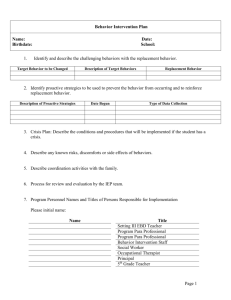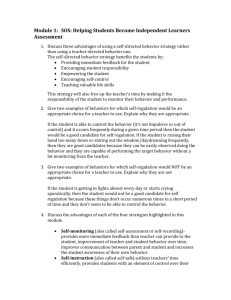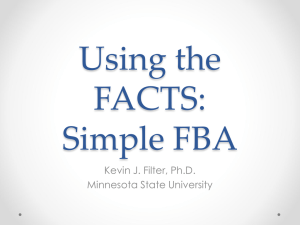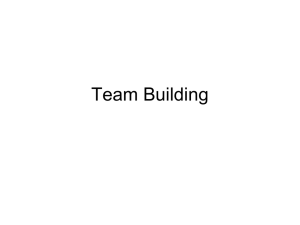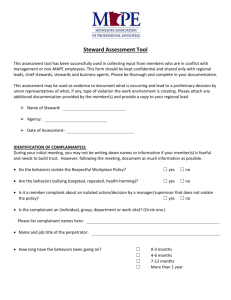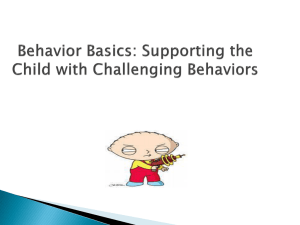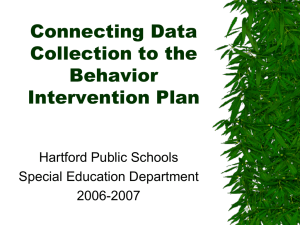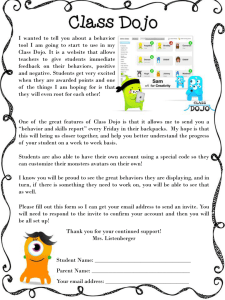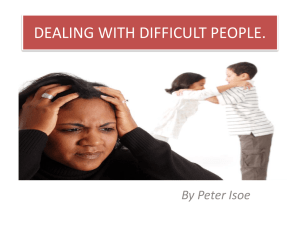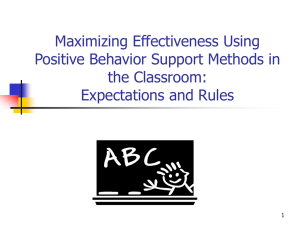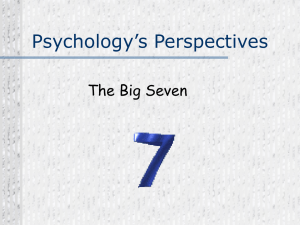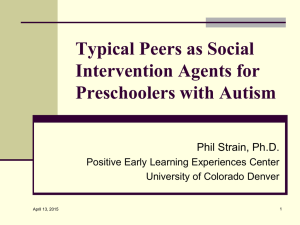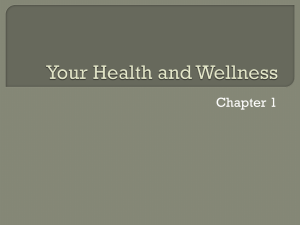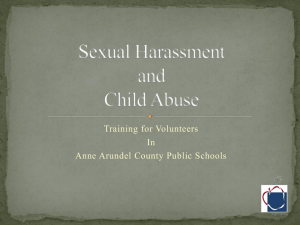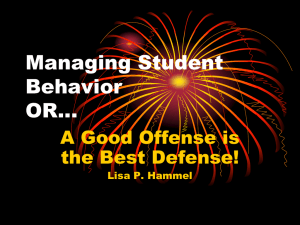Behavior Strategies
advertisement
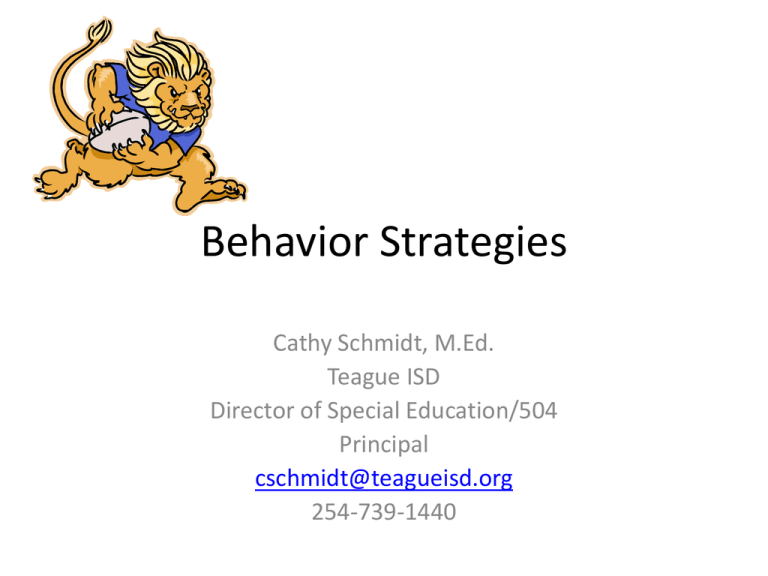
Behavior Strategies Cathy Schmidt, M.Ed. Teague ISD Director of Special Education/504 Principal cschmidt@teagueisd.org 254-739-1440 Quote • “I have come to the frightening conclusion that I am the decisive element in the classroom. It’s my personal approach that creates the climate. It’s my daily mood that makes the weather. As a teacher, I possess a tremendous power to make a person’s life miserable or joyous. I can be a tool of torture or an instrument of inspiration. I can humiliate or humor, hurt or heal. In all situations, it is my response that decides whether a crisis will be escalated or deescalated and a person humanized or dehumanized. • Hiam Ginott Behavior Management Principles Effective educators spend more time promoting responsible behavior than responding to irresponsible behavior. Foundations of Behavior • • • • • • All behavior is learned Behavior serves a function Environment impacts behavior Skill deficits impact behavior Team approach is critical Relationships matter!!!! Quote “No significant learning takes place without a significant relationship.” Dr. James Comer Functions of Behavior • • • • • • Get peer attention Get adult attention Get reward or tangible item Gain access to preferred activity Get sensory stimulation Escape or delay a difficult task or nonpreferred activity • Escape or avoid a demanding situation The Behavior Cycle Antecedent Consequence Behavior A B C’s of Behavior • BEHAVIOR DOES NOT OCCUR IN A VACCUM Antecedent –condition which precede and trigger the behavior. Behavior-current positive or negative behavior. Consequence-conditions which motivate, maintain or reinforce the behavior Note This… THE MORE YOU PAY ATTENTION TO BEHAVIORS (GOOD OR BAD) THE MORE YOU WILL GET THOSE BEHAVIORS! Positive and Proactive Prevention Techniques • • • • • • Non verbal 1. Proxemics-personal space 2. Kinesics-body posture and movement Paraverbal “How” you say what you say Verbal Please sit down These work well • • • • • • • Be real Short, simple language Set limits Be fair and consistent Give time for compliance Listen Know your students These do not work well • • • • • • • • Sarcasm Confronting in front of others Ultimatums Threatening Mocking Condescending Inflexibility Power struggles The Integrated Experience • The behaviors and attitudes of staff impact the behaviors and attitudes of students and vise versa! POSITIVE INTERVENTIONS • STAY CALM ISOLATE ENFORCE LIMITS CONSISTENCY LISTEN MODEL APPROPRIATE BEHAVIOR CLEAR EXPECTATIONS STRATEGIES THAT WORK ADHD strategies -meet needs for movement -redirect Provide structure/tasks in small segments Help organize materials CALMING strategies -cool off time -deep breathing -counting -allow “wait time” -squeeze ball -exercise Strategies Continued Arguing strategies-speak and spin -broken record -planned ignoring (choose your battles) Off task strategies -redirect -proximity -choices -timer Positive and Proactive Classroom Management Strategies • Speak and spin • Keep students academically engaged • Model appropriate behaviors • Establish a positive relationship with students Positive and Proactive Classroom Management Strategies-continued • Proximity control • Be consistent • Positive practices (Go back and show me “walking”) • Monitor – Moving around the room – Visually scanning Creating a Positive Classroom Climate 1. Create a positive relationship with students. (That does not mean to be friends!) 2. Maintain a professional and cooperative behavior, vocabulary and attitude. 3. Focus on the children’s needs first. ( It’s all about the kids!) 4. Do your tasks with joy, enthusiasm and energy. Teague Staff • Thank you for taking the time to read these strategies. If you have any questions, please feel free to contact me at any time. • My contact information is on the first slide. • Thanks for all you do for our kids. • Teague ISD- Where great things happen for kids every day! • Cathy
